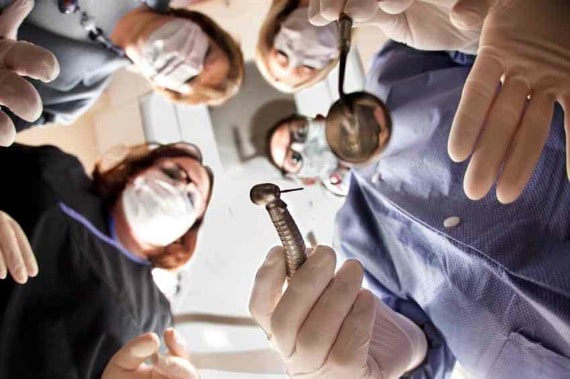Okay, I know. It’s a stretch. But one of the benefits of being a blogger is that you can redeem almost any situation by writing about it. Every experience becomes fodder for a post.
Photo courtesy of ©iStockphoto.com/fstop123
Last week, during a routine visit to my dentist, she discovered that I had some decay under an existing filling. Because it was close to the root, she insisted that I come in right away, which I did yesterday.
After removing the old filling and doing a little drilling, she suddenly stopped. She took off her protective mask and said, “I‘m afraid you need a root canal.”
The color drained from my face. I had never had a root canal, but I had heard the horror stories. In my mind, I envisioned being strapped into a chair while a sadistic dentist with a drill—a weapon!—inflicted unspeakable pain.
Worse, she said I needed an emergency root canal and would see if she could get me into a nearby endodontist. (I had never even heard that word before she uttered it. It means “inside the tooth.”) Fortunately, he could see me immediately.
Reluctantly, I drove the ten minutes to the office of Dr. Daniel Price. I dreaded the trauma I was about to experience.
Amazingly, I was in his office less than an hour. He performed the procedure, and I walked out shocked at what a non-event the entire experience was.
In addition to Dr. Price’s obvious dental acumen, I believe it was also due to his leadership ability. In particular, he exhibited six leadership skills, which are transferable to any leadership situation.
- He demonstrated empathy. From the moment I met him, Dr. Price communicated that it was okay to be anxious about this procedure. He was a great listener and touched my arm several times as he responded to me. I felt understood and safe.
- He clarified expectations. He explained that the old school procedure took three visits and six hours. It was very intrusive. He provided an overview of the latest technology and told me exactly what he was going to do and what I could expect. This built trust and helped me relax further.
- He under-promised. He told me that his goal was a “pain free experience.” As he administered the Novocain, he said, “You’re going to feel a little pressure” or “You might feel a little pinch.” I really liked these euphemisms for pain. They worked. As I have often said, the words we use often impact how we experience reality. I didn’t feel anything.
- He provided updates. All through the procedure, Dr. Price explained exactly what he was doing. I don’t like being out of the loop. It makes me even more nervous. However, his running commentary kept me relaxed. I was also fascinated by the whole procedure.
- He over delivered. He had initially told me the procedure would take about an hour or so. It took less than an hour. He said his goal was for the procedure was to make it as pain-free as possible, but he didn’t promise that. Regardless, it was pain-free. I experienced zero pain.
- He made himself available. Finally, after the procedure, he prescribed some pain medications, told me what I could expect next, and invited me to call if I encountered any complications. I felt like he genuinely cared about my whole experience.
As I was about to leave, he asked, “So how was it? Did we do okay?” I said, “Doc, I have experienced more pain from a haircut.” We both chuckled. “Seriously,” I continued, “this was a complete non-event. I couldn’t be happier.
Written by Michael Hyatt.
About the author: He is the Chairman of Thomas Nelson Publishers, the largest Christian publishing company in the world and the seventh largest trade book publishing company in the U.S.
You can read the original article at his personal blog here


Comments
Post a Comment